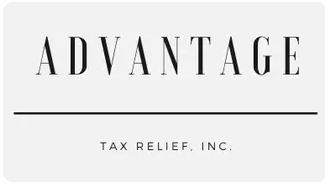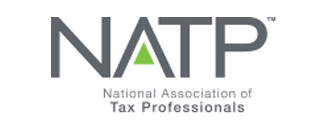How to Negotiate a Payment Plan with the IRS
March 3, 2025
March 3, 2025
 Dealing with the IRS can feel overwhelming, especially if you owe more than you can pay upfront. Thankfully, the IRS offers payment plans to help taxpayers settle their debts over time. By understanding the process and knowing how to negotiate effectively, you can take control of your tax situation and reduce stress. At Advantage Tax Relief, we specialize in helping clients like you navigate the IRS payment plan process. Here’s a step-by-step guide to get you started.
Dealing with the IRS can feel overwhelming, especially if you owe more than you can pay upfront. Thankfully, the IRS offers payment plans to help taxpayers settle their debts over time. By understanding the process and knowing how to negotiate effectively, you can take control of your tax situation and reduce stress. At Advantage Tax Relief, we specialize in helping clients like you navigate the IRS payment plan process. Here’s a step-by-step guide to get you started.
Step 1: Understand Your Tax Debt
Before you can negotiate a payment plan, you need to have a clear understanding of your tax liability. Here’s what to do:
Review IRS Notices: Carefully read all correspondence from the IRS to determine how much you owe, including penalties and interest.
Confirm the Amount: Cross-check the IRS’s numbers with your own records to ensure there are no discrepancies.
Know Your Deadlines: The IRS provides deadlines for resolving your tax debt, so act quickly to avoid additional penalties.
Step 2: Explore Your Payment Plan Options
The IRS offers several payment plan options depending on your financial situation and the amount you owe. These include:
Short-Term Payment Plan: For debts you can pay off within 180 days.
Long-Term Installment Agreement: For larger debts that require more time to repay.
Direct Debit Installment Agreement: Payments are automatically withdrawn from your bank account, which can simplify the process and reduce the risk of default.
Each option has its own eligibility criteria, fees, and benefits. Consulting with a tax resolution professional can help you determine which plan is best for your needs.
Step 3: Gather Necessary Documents
To negotiate effectively, you’ll need to provide the IRS with detailed financial information. Be prepared to gather the following:
Income Statements: Pay stubs, 1099s, or other proof of income.
Expense Documentation: Monthly bills, rent or mortgage statements, utility bills, and other necessary expenses.
Asset Information: Details about your bank accounts, retirement accounts, and property.
Tax Returns: Ensure your past tax returns are filed, as the IRS typically requires this before approving a payment plan.
Step 4: Determine What You Can Afford
Before negotiating, assess your finances to determine how much you can reasonably afford to pay each month. The IRS will require you to submit Form 433-A or 433-F, which details your income, expenses, and assets. Be realistic about your budget to avoid defaulting on your payments.
Step 5: Contact the IRS
Once you’re prepared, it’s time to contact the IRS to initiate the negotiation process. You can do this by:
Calling the IRS: Use the phone number provided on your IRS notice.
Applying Online: For certain payment plans, you can apply directly on the IRS website.
Submitting Forms by Mail: If required, complete and mail the appropriate forms to the IRS.
While it’s possible to handle this on your own, working with a professional can make the process smoother and increase your chances of approval.
Step 6: Negotiate Terms
During your discussion with the IRS, be prepared to negotiate terms that work for both parties. Key points to consider include:
Monthly Payment Amount: Offer an amount you can afford, based on your financial analysis.
Payment Timeline: Discuss how long you’ll need to pay off the debt.
Interest and Penalties: In some cases, the IRS may reduce or waive penalties if you demonstrate financial hardship.
Be polite and honest throughout the negotiation process. The IRS is more likely to work with you if you’re cooperative and transparent.
Step 7: Finalize the Agreement
Once you’ve agreed on a payment plan, the IRS will provide written confirmation of the terms. Review this document carefully and keep a copy for your records. It’s crucial to:
Make Payments on Time: Missing payments can void the agreement and result in enforced collection actions.
Monitor Your Account: Regularly check your account to ensure payments are applied correctly.
Communicate Changes: If your financial situation changes, notify the IRS immediately to discuss modifying your payment plan.
Step 8: Stay Compliant
To maintain your payment plan, you must stay compliant with all IRS requirements. This includes filing future tax returns on time and paying any new taxes owed. Falling out of compliance can result in the termination of your agreement.
Common Challenges and How to Overcome Them
Negotiating with the IRS isn’t always straightforward. Here are some common challenges and how to address them:
High Monthly Payments: If the IRS proposes a payment amount you can’t afford, provide additional financial documentation to support your case.
Rejected Applications: If your payment plan request is denied, work with a tax resolution expert to explore alternative solutions.
Enforced Collections: If the IRS has already initiated wage garnishments or bank levies, act quickly to negotiate a payment plan and stop these actions.
Conclusion
Negotiating a payment plan with the IRS can feel daunting, but it’s a manageable process if you take the right steps. By understanding your options, gathering the necessary documentation, and approaching the IRS with a clear plan, you can resolve your tax debt and regain control of your finances.
At Advantage Tax Relief, we’re here to help every step of the way. Whether you’re starting the negotiation process or need assistance with an existing plan, our team has the knowledge and expertise to ensure a successful outcome.

Dealing with the IRS can feel overwhelming, especially if you owe more than you can pay upfront. Thankfully, the IRS offers payment plans to help taxpayers settle their debts over time. By understanding the process and knowing how to negotiate effectively, you can take control of your tax situation and reduce stress. At Advantage Tax Relief, we specialize in helping clients like you navigate the IRS payment plan process. Here’s a step-by-step guide to get you started.
Step 1: Understand Your Tax Debt
Before you can negotiate a payment plan, you need to have a clear understanding of your tax liability. Here’s what to do:
Review IRS Notices: Carefully read all correspondence from the IRS to determine how much you owe, including penalties and interest.
Confirm the Amount: Cross-check the IRS’s numbers with your own records to ensure there are no discrepancies.
Know Your Deadlines: The IRS provides deadlines for resolving your tax debt, so act quickly to avoid additional penalties.
Step 2: Explore Your Payment Plan Options
The IRS offers several payment plan options depending on your financial situation and the amount you owe. These include:
Short-Term Payment Plan: For debts you can pay off within 180 days.
Long-Term Installment Agreement: For larger debts that require more time to repay.
Direct Debit Installment Agreement: Payments are automatically withdrawn from your bank account, which can simplify the process and reduce the risk of default.
Each option has its own eligibility criteria, fees, and benefits. Consulting with a tax resolution professional can help you determine which plan is best for your needs.
Step 3: Gather Necessary Documents
To negotiate effectively, you’ll need to provide the IRS with detailed financial information. Be prepared to gather the following:
Income Statements: Pay stubs, 1099s, or other proof of income.
Expense Documentation: Monthly bills, rent or mortgage statements, utility bills, and other necessary expenses.
Asset Information: Details about your bank accounts, retirement accounts, and property.
Tax Returns: Ensure your past tax returns are filed, as the IRS typically requires this before approving a payment plan.
Step 4: Determine What You Can Afford
Before negotiating, assess your finances to determine how much you can reasonably afford to pay each month. The IRS will require you to submit Form 433-A or 433-F, which details your income, expenses, and assets. Be realistic about your budget to avoid defaulting on your payments.
Step 5: Contact the IRS
Once you’re prepared, it’s time to contact the IRS to initiate the negotiation process. You can do this by:
Calling the IRS: Use the phone number provided on your IRS notice.
Applying Online: For certain payment plans, you can apply directly on the IRS website.
Submitting Forms by Mail: If required, complete and mail the appropriate forms to the IRS.
While it’s possible to handle this on your own, working with a professional can make the process smoother and increase your chances of approval.
Step 6: Negotiate Terms
During your discussion with the IRS, be prepared to negotiate terms that work for both parties. Key points to consider include:
Monthly Payment Amount: Offer an amount you can afford, based on your financial analysis.
Payment Timeline: Discuss how long you’ll need to pay off the debt.
Interest and Penalties: In some cases, the IRS may reduce or waive penalties if you demonstrate financial hardship.
Be polite and honest throughout the negotiation process. The IRS is more likely to work with you if you’re cooperative and transparent.
Step 7: Finalize the Agreement
Once you’ve agreed on a payment plan, the IRS will provide written confirmation of the terms. Review this document carefully and keep a copy for your records. It’s crucial to:
Make Payments on Time: Missing payments can void the agreement and result in enforced collection actions.
Monitor Your Account: Regularly check your account to ensure payments are applied correctly.
Communicate Changes: If your financial situation changes, notify the IRS immediately to discuss modifying your payment plan.
Step 8: Stay Compliant
To maintain your payment plan, you must stay compliant with all IRS requirements. This includes filing future tax returns on time and paying any new taxes owed. Falling out of compliance can result in the termination of your agreement.
Common Challenges and How to Overcome Them
Negotiating with the IRS isn’t always straightforward. Here are some common challenges and how to address them:
High Monthly Payments: If the IRS proposes a payment amount you can’t afford, provide additional financial documentation to support your case.
Rejected Applications: If your payment plan request is denied, work with a tax resolution expert to explore alternative solutions.
Enforced Collections: If the IRS has already initiated wage garnishments or bank levies, act quickly to negotiate a payment plan and stop these actions.
Conclusion
Negotiating a payment plan with the IRS can feel daunting, but it’s a manageable process if you take the right steps. By understanding your options, gathering the necessary documentation, and approaching the IRS with a clear plan, you can resolve your tax debt and regain control of your finances.
At Advantage Tax Relief, we’re here to help every step of the way. Whether you’re starting the negotiation process or need assistance with an existing plan, our team has the knowledge and expertise to ensure a successful outcome.


October 1, 2025
It seems like natural disasters such as hurricanes, floods, earthquakes, wild fires, and tornados are happening all the time and just about everywhere. Climate change also seems to be making these disasters more deadly and more destructive. Many people do step up to help survivors with needed financial donations. The only thing worse than the disasters themselves are the scammers that exploit these situations for financial gain at the expense of hard working and well-i ntentioned survivors and donors. Like yourself! Scams can take the form of fake charities and impostors posing as legitimate organizations or government agencies. Common scams typically entail vague appeals for donations without details, fake websites with names like real charities and caller ID tricks to appear legitimate. Several warnings signs of these scammers are: 1) pressure to give immediately, often preying on your emotions and not logic 2) a thank-you for a previous donation you don’t recall making 3) a request for payment by cash, gift card or wire transfer. The last are scammers’ favored payment methods because the money is easy to access, difficult to trace and almost impossible to cancel. A legitimate charity will welcome your donation whenever you choose to make it and by whatever means you choose. A great way to verify their legitimacy is to use the IRS Tax Exempt Organization Search tool at https://apps.irs.gov/app/eos/. Additionally, clients should always ask for a receipt and then check their bank or credit card statements to ensure the donation amount is accurate. If you think you were a victim of a suspected scam, you can and should report them to the Federal Trade Commission at https://reportfraud.ftc.gov/. How Advantage Tax Relief Can Assist You At Advantage Tax Relief, based in Itasca, IL, we have over a decade of experience helping individuals and businesses resolve tax issues. Our team specializes in offering personalized tax relief and tax resolution solutions tailored to your unique needs. We will work with you to assess your situation and explore your options, whether it’s an Offer in Compromise, installment agreements, or other strategies. Our experience allows us to identify the best path forward to ease your tax burden and guide you toward financial freedom. If you're facing tax debt, don't wait. Advantage Tax Relief is here to assist you with effective, professional help. Call Advantage Tax Relief today at 630-773-3200 to schedule a consultation and take the first step toward resolving your tax issues.

August 29, 2025
First, working overtime does not mean you are getting an automatic increase in your take-home pay because it is not going to be taxed. That is not what is going to happen. The tax savings will be in the form of a tax deduction when you file your Federal tax return the following year. There will be no immediate impact. Second, it only applies for Federal income taxes. It does not include State, Social Security or Medicare taxes. Third, it also only applies to the overtime premium and within certain deduction and wage limits. You can only deduct the pay that exceeds your regular rate of pay. The 'half' portion of 'time-and-a-half' compensation. For example, say you make $20 per hour and work 5 hours of overtime that week at time-and-a-half. The deduction would the Federal tax on $50 of premium pay. ($20 divided by 2 times 5 hours) Finally, the maximum annual deduction is $12,500 for single filers and $25,000 for joint filers. The deduction phases out for taxpayers with modified adjusted gross income over $150,000 (or $300,000 for joint filers).



